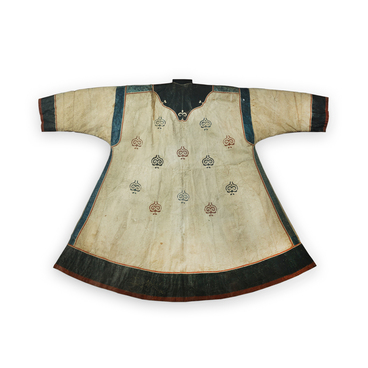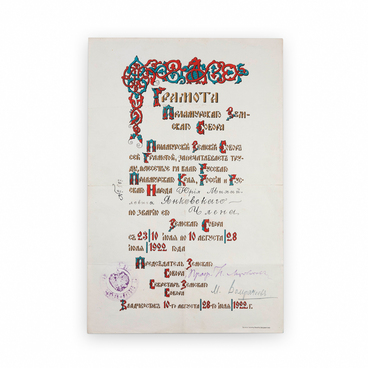The “Ethnography” hall in the Vladimir Arseniev Museum of Far East History displays an art object — a tree and a map of the Orochi shaman’s journey.
The tree, standing in the center of the hall, symbolizes the power of the clan and traditional ideas of the Primorye peoples. The map reproduced on the ceiling of the hall is a copy of the one created by the Orochi themselves — the Orochi shaman Saveliy Khutunka (from the same family as Prokopiy Khutunka, Vladimir Arseniev’s guide). It was obtained during the 1929 expedition of Aurorin and Kozminsky, the staff members of the Museum of Anthropology and Ethnography (MAE — Kunstkamera). Professor Lev Yakovlevich Sternberg suggested and defined the mission of this expedition.
The map depicts both topographical and mythological concepts of the Orochi people: its one side shows the spaces of land and sea, and the other side features the paths of travels of the ordinary people’s souls and the shamans’ wanderings. In the center of the map the Eurasia continent is drawn in the form of a moose (for convenience it is depicted in a spread-out form). The moose’s spine is a mountain range of nine peaks. The Orochi people live on the eastern half of the land, while the Russians and other peoples live on the western half. On the head of the moose is China, directly below is a second moose of a smaller size — this is the afterlife “buni” world. This world is opposite to earth, and it is there that an old man turns into a child, a child — into an old man, a smart man — into a stupid one, a lucky one — into an unlucky one, a whole thing — into a broken one, and a broken one — into a whole one.
The traditional economic activities of the peoples of the Far East included hunting, fishing and gathering. The human being was completely dependent on the natural world, the “hosting landscape”, which became the cradle of cultural development. The images of the main elements on which human life depended — water and fire — were animated in all cultures; the image of the sky, the sun, the moon, and the stars also fit into the traditional picture of the world.
The exhibition hall is
arranged in such a way that visitors can lie down to be able to view the map as
a firmament depicting the wanderings of the souls of the dead.


